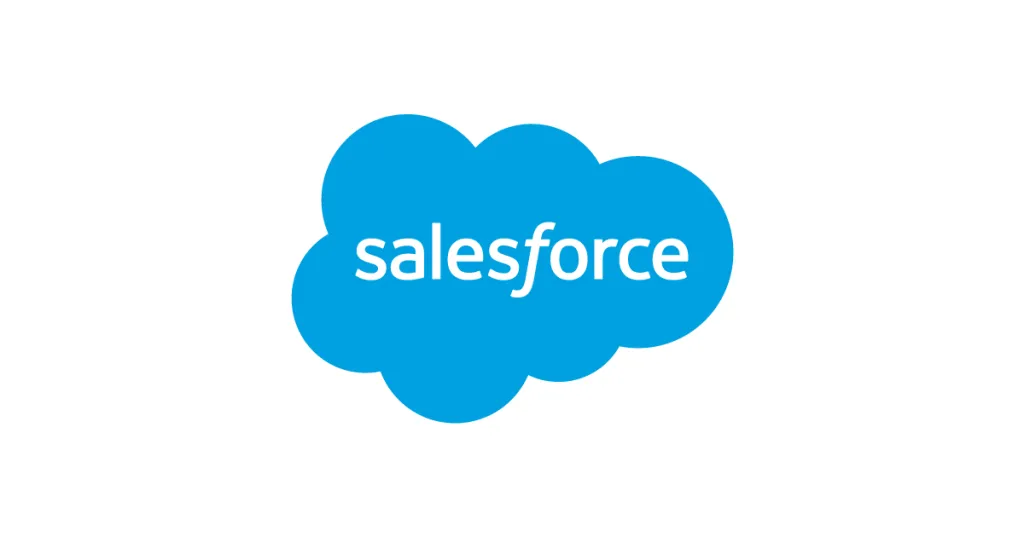Introduction
With the ever-increasing demand for optimized digital experiences, many businesses are turning to digital experience platforms (DXPs) to power their online presence and customer interactions. A DXP provides tools to manage content, personalize experiences, integrate data from various systems, and analyze user behavior across channels. There are many options on the market from established leaders to newer innovative solutions. In this blog post, we evaluate 15 of the top DXPs based on their functionality, track record, ecosystem, and suitability for different use cases.
Methods of Evaluation
To determine the top 15 DXPs, each platform was evaluated based on criteria such as features and functionality, adoption rates, third-party integration options, customer reviews, pricing, and continued innovation. Additional factors like number of backlinks, average monthly search volume for the keyword phrase, and monthly website traffic were also considered to understand a platform’s authority and market presence. The evaluation focused on suitability for a variety of digital experiences from websites and blogs to online stores and complex B2B customer journeys.
1. WordPress
WordPress is an open-source content management system (CMS) that can be used to easily create blogs and websites. It was launched in 2003 and is now the most popular CMS in the world, powering over 38% of websites globally according to W3Techs.
Pros: Some key advantages of using WordPress include:
– It’s open-source which means it’s free to download and use.
– Very robust ecosystem with thousands of plugins and developers to support customization needs.
– Easy to use interface makes it ideal for small businesses and agencies to build and maintain sites.
– Large community and support resources available online.
Cons: One key disadvantage of WordPress is that because of its flexibility and large ecosystem, sites can sometimes become bloated with unnecessary plugins which impacts load times and performance.
Pricing: WordPress itself is free and open-source. Many optional paid services and hosting providers are available as well to support WordPress sites and provide additional features.
Some key stats about WordPress include:
– Used by over 38% of websites globally
– Over 60 million downloads each year
– Has a vast ecosystem with over 55,000 plugins and a large community of developers
2. Adobe Experience Cloud
Adobe Experience Cloud is a leading digital experience platform (DXP) that allows businesses to deliver personalized experiences across various digital touchpoints. As the industry leader, Adobe Experience Cloud offers a comprehensive set of tools and capabilities for content management, digital asset management, data collection and analytics.
Pros: Some of the key advantages of Adobe Experience Cloud include:
– Leader in the DXP market with a vast set of tools and resources
– Strong brand recognition and mind share
– Wide variety of components and extensive ecosystem of third-party solutions
– Seamless integration between different solutions due to common frameworks
– Robust analytics and reporting capabilities from massive customer data
Cons: One potential disadvantage is the large upfront investment required to fully utilize Adobe Experience Cloud due to its breadth of solutions. Additional customization, implementation and support costs can also be significant for large deployments.
Pricing: Adobe Experience Cloud pricing starts at around $150 per user per month, but can reach over $300 per month depending on the specific solutions and number of users required. There are also deployment fees and additional costs for customizations, support and services.
Some key stats about Adobe Experience Cloud include:
– Over 250,000 customers globally across various industries
– Over 30 pieces of individual software that make up the Experience Cloud
– Processes over 30 trillion transactions per day from digital experiences
– Continuously ranked as a leader in the Gartner Magic Quadrant for DXP
3. Medium
Medium is a digital publishing platform developed by Medium, Inc. that allows users to publish and distribute their writing on the web. Medium was founded in 2012 by Twitter co-founders Ev Williams and Biz Stone. It aims to be a platform for ideas and stories with depth and substance.
Pros: Some of the key advantages of Medium include:
– Powerful content collaboration platform that allows for easy commenting and editing.
– Robust publishing and social sharing tools to grow readership and audience engagement.
– Influential professional community where readers can discover high-quality content and writers can gain exposure.
Cons: One potential disadvantage is that as an open platform, there is a lot of content on Medium which makes it difficult at times to get discovered or gain traction as a writer.
Pricing: Medium offers a free basic publishing plan. It also offers premium subscription plans that provide additional features and functionality starting at $5 per month.
Some key stats about Medium include:
– More than 200 million monthly visits
– Over 60 million people have published on the platform
– Medium hosts content in over 35 languages
4. IBM Digital Experience
IBM Digital Experience is a leading digital experience platform (DXP) that helps large enterprises deliver personalized omnichannel experiences. As one of the earliest and most established DXP providers, IBM has vast experience powering the digital needs of some of the world’s largest brands.
Pros: Some key advantages of IBM Digital Experience include:
– Leading platform powering large enterprises digital needs
– Extensive integrations across the IBM portfolio
– Proven scalability for even the largest global deployments
Cons: A potential disadvantage is the platform’s complexity which can make it expensive to deploy and maintain for smaller implementations.
Pricing: IBM Digital Experience pricing is based on annual subscriptions which vary based on workload, usage volumes, and required capabilities. Contact IBM sales for a quote tailored to your specific requirements.
Some key stats about IBM Digital Experience include:
– Over 10,000 customers globally across all industries
– Supports billions of digital interactions per month
– Recognized as a leader in the most recent Gartner and Forrester reports for digital experience platforms
5. Shopify
Shopify is a leading digital commerce platform that allows merchants to easily setup and manage an online store. Founded in 2006 and headquartered in Ottawa, Canada, Shopify powers over 1 million businesses in approximately 175 countries. Shopify provides a complete commerce solution including themes, Apps, marketing tools, payments, and fulfillment services to help merchants easily sell online.
Pros: Some key advantages of using Shopify include:
– Beautiful template library to create polished online stores easily
– Integrated marketing and sales channels like Facebook, Instagram, and TikTok
– Powerful app ecosystem with over 6,000+ apps to extend functionality
– Continuous upgrades and new features rolled out frequently
Cons: The main disadvantage of Shopify is the cost. While the basic Shopify plan starts affordable, to unlock more advanced features merchants will need to upgrade to more expensive monthly plans.
Pricing: Shopify offers several pricing plans ranging from:
– Basic Shopify plan starting at $29/month
– Shopify plan at $79/month
– Advanced Shopify plan at $299/month
– Shopify Plus tailored enterprise plan starting at $2000/month
Some key stats about Shopify include:
– Over 1 million merchants globally
– Processes over $175 billion in sales annually
– Supports over 300 different cryptocurrencies as payment options
– Popular with D2C brands for its out-of-the-box templates and features
6. Squarespace
Squarespace is an all-in-one website builder and digital experience platform (dxp) that allows users to create feature-rich websites or online stores without any coding required. Founded in 2004, Squarespace has grown to serve over 3 million customers across 140+ countries. With an intuitive drag-and-drop interface, beautiful templates, and strong ecommerce capabilities, Squarespace remains one of the top choices for non-technical users seeking an easy solution to establish an online presence.
Pros: Key advantages of using Squarespace include:
– Beautiful, easy to use tools great for non-technical users
– Covers content, commerce, analytics in an all-in-one package
– Excellent templates for creating quick, great looking sites without design expertise
– Strong focus on mobile experience and responsive design
– Robust ecommerce capabilities and payment processing tools
Cons: A potential disadvantage is the lack of deeper customization options for more advanced users seeking granular control over design and features. While templates and blocks provide flexibility, some users may prefer more flexibility than Squarespace allows.
Pricing: Squarespace offers transparent monthly pricing starting at $12 per month for an Individual plan covering a single site. Business and Commerce plans provide more features and capabilities starting at $18 and $26 per month respectively. All plans include a free domain name for your first year. No long term contracts required.
Some key stats about Squarespace include:
– Over 3 million customers globally
– Serving customers across 140+ countries
– 500+ beautifully designed templates for websites and stores
– 24/7 customer support in 9 languages
7. Salesforce Marketing Cloud
Salesforce Marketing Cloud is a leading digital experience platform (DXP) offered by Salesforce. As the marketing arm of the Salesforce Customer 360 suite, Marketing Cloud allows marketers to gain a unified view of customers and deliver personalized experiences across all digital channels. It offers capabilities for marketing automation, advertising, analytics, personalization, commerce and more.
Pros: Key advantages of Salesforce Marketing Cloud include its leadership in marketing automation with Einstein analytics capabilities for AI-powered personalization. It also benefits from Salesforce’s wide partner ecosystem and strong app integration with the Salesforce CRM platform. The Salesforce brand is also strongly recognized among B2C and B2B marketing teams.
Cons: A potential disadvantage is its higher cost compared to some competitors due to Salesforce’s large capabilities and established brand. Implementation also requires more resources versus simpler point solutions.
Pricing: Salesforce Marketing Cloud pricing starts at $150 per user per month for the Essentials edition and scales based on the edition, users, and add-on services selected. Pricing is subscription-based with annual commitments.
Some key stats about Salesforce Marketing Cloud include: Used by over 25,000 customers worldwide, including over half of the Fortune 100. Processes over 100 billion emails and pages per month. Handles marketing for over 1.5 trillion customer touchpoints annually. Provides capabilities for SMS/push/social analytics and personalization.
8. Drupal
Drupal is an open source content management platform (CMS) and digital experience platform (DXP) built on the PHP language. First launched in 2001, Drupal is one of the oldest and most popular open source CMS options available today. It was developed to make websites easy to manage and update for non-technical users and is highly customizable to meet the needs of a wide variety of organizations.
Pros: Key advantages of Drupal include: Mature and full-featured open source platform with a large ecosystem of add-on modules. Highly customizable and extensible through its module system. Expertise in responsive design and building optimized experiences for any device. Robust API and integrations available. Large global community and support resources available.
Cons: The main disadvantage of Drupal is its steeper learning curve compared to simpler CMS options. It takes more technical skills and experience to set up and administer a Drupal site optimally compared to other options.
Pricing: Drupal is open source and free to download and use. Paid support subscriptions and services from third parties are available but not required to use the software.
Some key stats about Drupal include: Used by over 1 million websites globally including sites like Whitehouse.gov, NPR, and MIT. Over 1,500 contribute developers. Comes pre-packaged with functionality for blogs, forums, file galleries and more. Has a vibrant developer community and marketplace of over 25,000 add-on modules to extend its capabilities.
9. Joomla
Joomla is an open source content management system (CMS) that makes it easy for both technical and non-technical users to build websites and applications. Founded in 2005, Joomla has grown to be one of the most popular go-to CMS options, especially for small businesses and associations that need a flexible platform.
Pros: Some key advantages of using Joomla include:
– Mature and reliable CMS preferred by many for its balanced features
– Intuitive interface works for both technical and non-technical users
– Large library of templates and extensions to customize functionality
– Free open source option with paid support also available
Cons: As an open source project, ongoing maintenance and development relies on community contributions. This means some features may lag commercially supported CMS platforms. The user interface is also not as modern as some newer content management options.
Pricing: Joomla is free and open source, with no required licensing fees. Additionally, commercial support plans are available starting around $99 per year for a single site license.
Some key stats about Joomla include:
– Used by over 1 million websites globally
– Translated into over 50 languages
– Large developer community with over 7,000 extensions available
– 15+ years of ongoing development and support
Joomla.orgThe Flexible Platform Empowering Website Creatorsjoomla.org
10. SAP Customer Experience
SAP Customer Experience is a leading digital experience platform (DXP) developed and marketed by German software company SAP SE. With offerings that go beyond a traditional DXP to include e-commerce and customer relationship management capabilities, SAP Customer Experience provides a robust set of tools for managing digital customer interactions across sales, service, and marketing functions.
Pros: Some key advantages of SAP Customer Experience include:
– Robust set of tools beyond DXP including commerce and CRM capabilities
– Strong option for existing SAP customers needing integrated digital solutions
– Continued heavy investment and ongoing expansion of the Customer Experience platform
Cons: A potential disadvantage is the platform’s complexity which can make it better suited for large enterprises vs small to medium-sized businesses due to its breadth of features and integrations.
Pricing: SAP Customer Experience pricing varies based on factors like organization size, modules/functionality needed, and support/maintenance plans. Generally, customers should expect an annual subscription cost that can range from tens of thousands to millions of dollars depending on deployment size and needs.
Some key stats about SAP Customer Experience include:
– Over 12,000 customers globally across all industries
– Over 30 years of experience developing enterprise software
– Over $30 billion in annual revenue
11. Webflow CMS
Webflow is a visual digital experience platform (DXP) that allows users to build custom websites visually without code. Founded in 2013 and headquartered in San Francisco, Webflow has grown to support over 250,000 active sites built by their users each month on domains like .webflow.io. With Webflow users can design and build responsive sites using a WYSIWYG editor and then deploy static HTML sites for faster load times and better security compared to traditional CMS platforms.
Pros: Some of the key advantages of Webflow include:
– Visual CMS focused on intuitive page building without code
– No-code/low-code authoring experience makes site building accessible
– Native support for static site delivery provides better performance than server-side generated sites
– Integrates with various ecommerce platforms, CMSs and others via 150+ app integrations
Cons: One potential disadvantage is that since sites are static HTML, advanced server-side functionality may not be possible without custom code. Dynamic features that require server processing or databases may be difficult to achieve compared to traditional CMS platforms.
Pricing: Webflow offers three pricing tiers: Basic at $16/month, Pro at $36/month, and Teams starting at $72/month. All plans include unlimited pages, components, and team members. The Pro and Teams plans unlock additional functionality like more storage, advanced roles, and integrated hosting.
Some key stats about Webflow include:
– Used by over 250,000 active sites each month
– Integrates with over 150 applications including Shopify, WordPress, and Adobe Creative Cloud
– Features a visual page builder and component library for quickly building prototypes
– Sites can be deployed as static HTML for better speed and security than traditional CMS platforms
12. BigCommerce
BigCommerce is an all-in-one ecommerce platform that provides merchants with everything they need to build and grow an online store. Founded in 2009 and based in Austin, Texas, BigCommerce powers over 60,000 online stores in 150+ countries. The platform offers a native responsive design that works seamlessly across all devices, as well as a growing library of features and integrations through its app marketplace.
Pros: Some key advantages of BigCommerce include: – All-in-one solution supports the full ecommerce lifecycle from content to cart to checkout – Responsive design works across all devices for a consistent shopping experience – App ecosystem offers hundreds of integrations to address custom needs – Scalable platform can handle increased traffic and sales volumes
Cons: One potential disadvantage is that not having the option to host the platform yourself means relying on BigCommerce’s infrastructure and uptime promises.
Pricing: BigCommerce offers several paid plans starting at $29.95/month for Standard, $79.95/month for Plus, $249.95/month for Pro, and custom Enterprise plans. All plans include the core ecommerce platform features while higher tiers unlock additional functionalities like tax calculation, gift cards, 50+ shipping carriers and more apps.
Some key stats about BigCommerce include: – Over 60,000 online stores use BigCommerce – Supports over 150 countries and territories – Processed over $30 billion in online sales – Growing app ecosystem with over 500+ apps and integrations
13. Magento
Magento, now known as Adobe Commerce, is an open-source digital experience platform and e-commerce software suite. Originally launched in 2008, Magento was acquired by Adobe in May 2018. Magento is a flexible and customizable commerce solution that allows merchants to create personalized shopping experiences for both B2B and B2C customers.
Pros: Some of the key advantages of Magento include:
– Highly customizable platform to create unique storefronts
– Large collection of extensions and integrations through Magento Marketplace
– Optimized to handle enterprise-level traffic and complex product catalogs
– Flexible configuration to support both B2B and B2C use cases
– Robust backend for managing orders, customers, products and more
Cons: One potential disadvantage is that the learning curve can be steep since Magento is a full-featured platform. It will require investment in developer resources and training to unlock its full capabilities.
Pricing: Magento is available in both open-source (free) and commerce (paid) editions. Pricing for Magento Commerce starts at $2,500 per month and goes up based on store revenue and additional services needed.
Some key stats about Magento include:
– Used by over 250,000 online stores globally
– Available in over 50+ languages
– Supports multiple sales channels including online, offline, in-store and mobile
– Integrates with over 200 payment gateways and shipping carriers
14. CRN CMS
CRN CMS is a leading digital experience platform (DXP) that leverages AI and ML technologies to provide smart content creation and delivery capabilities. Founded in 1982, CRN CMS has evolved into a comprehensive DXP solution for companies looking to enhance their digital experiences.
Pros: Some key advantages of CRN CMS include:
– AI assistant that uses NLP to understand content needs and helps automate content creation workflows
– ML-powered personalization and recommendations that provide context-aware, personalized digital experiences
– AI/ML smarts that analyze content performance and optimize website experiences over time
Cons: One potential disadvantage is that as an AI-first platform, it may require more technical expertise to fully leverage all of its intelligent capabilities compared to more traditional CMS solutions.
Pricing: Pricing for CRN CMS is typically based on a monthly subscription model starting at $999 per month for smaller businesses and scaling up based on factors like traffic, content volume, and customization needs.
Some key stats about CRN CMS include:
– Over 30,000 customers worldwide
– Processes over 500 million content requests daily
– Delivers content in over 50 languages
15. Progress Sitefinity
Progress Sitefinity is a leading digital experience platform (DXP) that allows businesses to create and manage engaging web experiences. As an enterprise-grade .NET based solution, Sitefinity provides robust content management and marketing capabilities.
Pros: Some key advantages of Progress Sitefinity include:
– Being a .NET based solution, it allows leveraging existing .NET skills and integration with other .NET applications
– Robust content management and marketing tools that enable creating and optimizing digital experiences
– Extensive partner ecosystem that provides implementation, customization and additional functionality through a marketplace of third-party extensions
Cons: A potential disadvantage could be the learning curve for those unfamiliar with .NET development since Sitefinity is built on the .NET platform.
Pricing: Progress Sitefinity pricing starts at around $5,000 per year for the basic edition and goes up based on additional features, users, and custom requirements. They also offer on-premises perpetual licensing options.
Some key stats about Progress Sitefinity include:
– Used by over 5,000 customers worldwide across various industries
– Supports over 30 languages and 40 currencies
– Backed by an extensive partner ecosystem of over 300 implementation and technology partners
Conclusion
While every business has unique requirements, the platforms featured provide robust functionality and proven success in powering digital experiences. Leveraging a full-featured DXP can help streamline processes, deliver more personalized experiences at scale, and gain valuable insights. For most organizations, one of these top 15 options should align well with their needs and growth plans for 2023 and beyond. By choosing the right DXP, businesses can more efficiently engage customers online and accelerate their digital transformation journey.

















